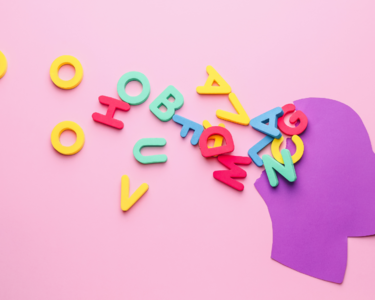For some, it's racing thoughts. For others, it's a random sense of dread. Whether your worries are great or small, your experiences are valid—and we're here to help you understand them a little better.
Take a look at the following statements and respond with how much or how little you agree with them, and we’ll help you better identify where your anxiety levels are. And then we’ll offer friendly, expert-backed advice to help you start finding relief from any anxiety symptoms you may be experiencing.
Disclaimer: This quiz is not meant to be a diagnostic tool and shouldn’t be used as one. Always see a licensed mental health professional to address your concerns.

Questions Overview
- I totally agree with this.
- I kind of agree with this.
- Eh, I don’t agree with this that much.
- I don’t agree with this at all.
- I totally agree with this.
- I kind of agree with this.
- Eh, I don’t agree with this that much.
- I don’t agree with this at all.
- I totally agree with this.
- I kind of agree with this.
- Eh, I don’t agree with this that much.
- I don’t agree with this at all.
- I totally agree with this.
- I kind of agree with this.
- Eh, I don’t agree with this that much.
- I don’t agree with this at all.
- I totally agree with this.
- I kind of agree with this.
- Eh, I don’t agree with this that much.
- I don’t agree with this at all.
- I totally agree with this.
- I kind of agree with this.
- Eh, I don’t agree with this that much.
- I don’t agree with this at all.
- I totally agree with this.
- I kind of agree with this.
- Eh, I don’t agree with this that much.
- I don’t agree with this at all.
- I totally agree with this.
- I kind of agree with this.
- Eh, I don’t agree with this that much.
- I don’t agree with this at all.
- I totally agree with this.
- I kind of agree with this.
- Eh, I don’t agree with this that much.
- I don’t agree with this at all.
- I totally agree with this.
- I kind of agree with this.
- Eh, I don’t agree with this that much.
- I don’t agree with this at all.
- I totally agree with this.
- I kind of agree with this.
- Eh, I don’t agree with this that much.
- I don’t agree with this at all.
- I totally agree with this.
- I kind of agree with this.
- Eh, I don’t agree with this that much.
- I don’t agree with this at all.
More Quizzes
All About Anxiety
What is anxiety?
Anxiety involves feeling a sense of unrest, like fear or apprehension. It’s a completely understandable and valid thing to feel at different points in your life, like when you’re applying for your dream job or getting ready to take a really important test. While there’s nothing wrong with having anxiety from time to time, it can start to take a toll on your mental well-being when you experience it all the time.
What are anxiety disorders?
Anxiety disorders are mental health conditions that impact your ability to enjoy and get the most out of your day-to-day life. Some well-known types of anxiety disorders include:
- Generalized anxiety disorder: A disorder where a person consistently experiences anxiety about a variety of things (even things that objectively aren’t a big deal).
- Panic disorder: A disorder where a person frequently experiences panic attacks (a state of intense fear with physical symptoms like a racing heartbeat).
- Social anxiety disorder: A disorder where a person feels stressed and uneasy about being in social settings, often because of their own insecurities.
-
Separation anxiety disorder: A disorder where a child feels deep stress and unease when being apart from a parent or guardian.
How do you know if you have an anxiety disorder?
Meet with a mental health professional to get a diagnosis. Mental health professionals like psychiatrists have the education and training to carefully weigh your symptoms and determine if anxiety is a serious factor in your day-to-day life. They can suggest a treatment plan that’s best for you and your lifestyle, like medication and therapy.
- For example, Cognitive Behavioral Therapy (CBT) is a hands-on type of treatment that helps people learn active strategies and coping mechanisms to help them deal with their anxiety.
Ways to Reduce Anxiety at Home
- Do some deep breathing exercises. Find a comfortable place to sit or stand and focus on taking deep breaths. Inhale slowly through your nose, counting up to 5 (if you can). Then, exhale through your mouth, counting to 5 once more.
- Journal about your anxiety. Whenever you’re feeling especially anxious, jot down your experiences in a notebook or diary. The more you track your anxious feelings, the easier it will be to figure out what’s causing them.
- Give yourself time to worry each day. At a consistent time each day, give yourself permission to indulge your worries and stressors for a short, set period. Feel free to pencil your worries in a diary during this time, or just utter them aloud.
-
Vent to your friends and loved ones. Anxiety can be a heavy weight, but it absolutely isn’t one that you have to shoulder alone. It can be immensely comforting and gratifying to know that you’re not alone—plus, it just feels nice to share what’s on your mind rather than keeping it locked inside.
- Don’t have a confidant? That’s totally okay. Websites like 7Cups, BuddyHelp, and My Black Dog are all free resources where you can be connected with a listening ear.
- Make time for exercise throughout the week. Even if it’s for just a few minutes, try to get your blood pumping regularly. Something as simple as a walk around the neighborhood can be an effective way to work out—best of all, it can help give your mood a boost.
- Develop a healthy sleep schedule. Adults need at least 7 hours of shut-eye each night, while teens need around 8-10. Try to create a routine where you can wake up and go to bed at consistent times each day, so you can put your best foot forward when you wake up.
Want to learn more?
Want to take a closer look at what anxiety really is and how it works? Check out these expert-verified sources:
You Might Also Like
Medical Disclaimer
Any medically related content, whether User Content or otherwise found on the Service, is not intended to be medical advice or instructions for medical diagnosis or treatment, and no physician-patient or psychotherapist-patient relationship is, or is intended to be, created.










